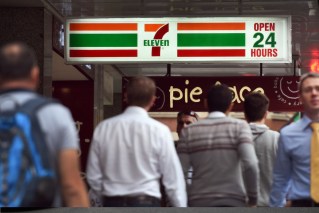Sinking inflation puts rate rises off-limits
Australia’s annual inflation rate cooled to 4.1 per cent in the December quarter in welcome news for borrowers hoping for interest rate relief.
“Dead, buried, cremated: The prospect of another interest rate hike in Australia is no more,” Moody’s Analytics economic Harry Murphy Cruise said after the release of Wednesday’s data.
“The odds of a hike were low leading into the December inflation print, but the latest inflation data confirm the Reserve Bank of Australia’s next move will be down.”
The Australian Bureau of Statistics consumer price index moderated by more than expected to 4.1 per cent, down from 5.4 per cent at the last quarterly update in September.
Over the quarter, it weakened to 0.6 per cent from 1.2 per cent in the three month to September.
ABS head of prices statistics Michelle Marquardt said it was the smallest quarterly rise since the March 2021 quarter.
“While prices continued to rise for most goods and services, annual consumer price index inflation has fallen from a peak of 7.8 per cent in December 2022, to 4.1 per cent in December 2023,” she said.
A convincing slowdown was expected in December, with economists tipping a 4.3 per cent annual increase in the headline result and 0.8 per cent on a quarterly basis.
Treasurer Jim Chalmers welcomed Wednesday’s data, describing it as “not mission accomplished but … very welcome and really encouraging
progress”.
“Despite the challenges and the pressure coming at us from around the world, and from around the country – whether it is global economic uncertainty or heavy weather, whether this inflation challenge and the impact of recent interest rate rises – we do face the period ahead from a position of genuine economic strength,” he said.
“If you think about 2024, what we are seeing here is inflation is slowing, real wages are growing, and from 1 July we will see tax cuts flowing.”
Chalmers said there had been two consecutive quarters of real wages growth and the slowing inflation was encouraging. The revamped stage-three tax cuts would provide more relief for struggling Australians.
“It is really clear now, really beyond doubt, Labor’s cost-of-living plan is helping, our responsible economic management is helping as well and because of those things and because we understand the pressures people are still under, the tax cut from 1 July will be another way we support the workers and families, women and young people, steelworkers and early educators of this country,” he said.
Shadow treasurer Angus Taylor was less enthusiastic, however. Taylor said the latest figures confirmed that the level of prices had increased by almost 10 per cent since the 2022 election – or what he said was the equivalent of doubling the GST.
“Labor has smashed household budgets with higher prices, higher mortgage repayments and higher taxes,” he said.
“Families are feeling the pain of a 10 per cent increase in prices since the last election, and Labor’s broken promise does not touch the sides. It is a Band-Aid on a bullet wound.”
The inflation data sets the scene for the first cash rate meeting of 2024 on February 6, with the Reserve Bank likely to appreciate proof of a weakening inflationary pulse.
Chalmers refused to say which way he though the RBA was likely to move next week.
“They will weigh up all the data in the economy and come to a decision independently before long,” he said.
But EY chief economist Cherelle Murphy was in the same corner as Moody’s Murphy Cruise.
“Mortgage-holders can breathe a sigh of relief, thanks to the most important data point ahead of the February Reserve Bank board meeting confirming the last 13 rate hikes have worked. The Reserve Bank has no reason to lift the cash rate next week,” she said.
Borrowers may, however, need to wait longer for rates to start to fall.
“Cuts this year could be premature as risks persist into 2024. Domestic sources of inflationary pressures are still present – including continued strong demand for housing, rising insurance premiums and a tight labour market,” Murphy said.
“International sources, including conflict in the Middle East and global shipping issues, could also be a source of upward pressure on energy and transport prices as the year rolls on.
The Reserve Bank has lifted interest rates since May 2022 to try to bring inflation back within its 2-3 per cent target range.
The resulting pain has been felt acutely by mortgage holders in the form of higher monthly repayments. More than $1200 has been added to average monthly mortgage payments since the hikes began.
– with AAP








